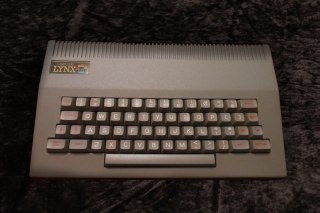While it's 48k is relatively modest it does have one big advantage... it uses a 3 bitplaned screen - allowing 8 colors at 256x252 pixels... and even offers 2 screen buffers for the 'green' color channel within the built in 32k Vram
Due to its early release, it's hardware is a little odd, but it offers some decent graphics and it's unusual hardware setup makes it quite a curiosity... lets take a look!


